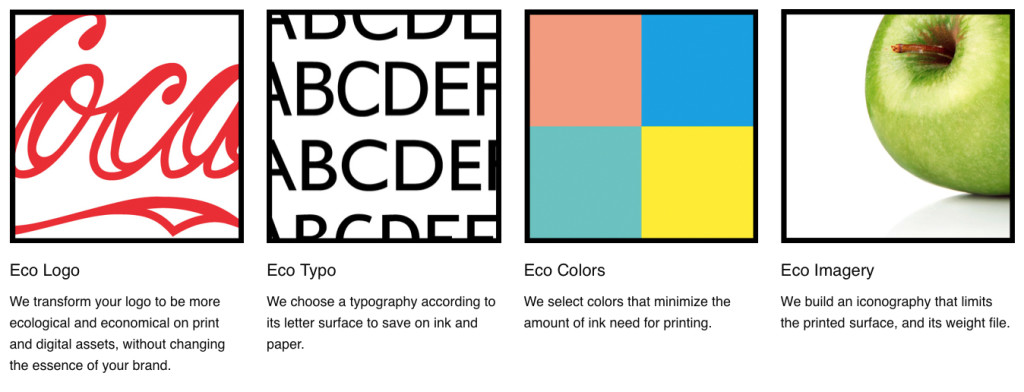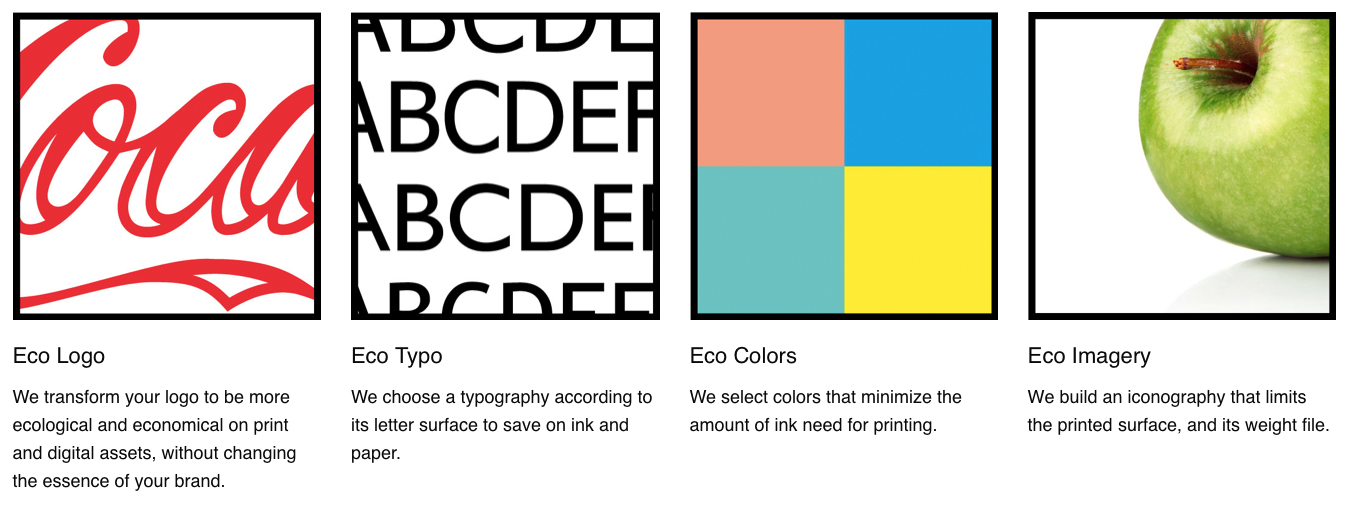Sustainable Brand Design

Environmental concerns are increasingly top of mind for companies across the globe. And rightly so–global warming, growing populations, and shrinking resources mean environmental responsibility must become a priority for huge brands, especially those that are consumer-based. As long as people buy things, there will be resources used and waste produced. But there are many ways to reduce resources used as well as the resulting waste (and maybe even to do a little good for the environment).
The obvious and most common practices (though they are still often priced higher than standard printing methods) include using environmentally-friendly inks and print on recycled stock. Packaging in recyclable substrates is great if possible. Minimizing said packaging is even better. But what are some of the less obvious ways brands can walk the walk when it comes to being eco-conscious?
EcoBranding
What is EcoBranding? We don’t seem to have a clear, universal definition (yet), but one method companies may consider to employ “eco-branding” is through reduced use of ink in the company brand itself. By designing logos with fewer flood colors, a substantial amount of ink can be saved over the millions of printed products a brand creates and sells every year. Ink savings can also be captured by using certain typefaces, as well as colors and images that require smaller quantities of ink.
Ecobranding Interbrand shares some interesting examples of how it can turn a regular brand into an eco brand.
Make it Last
A consumer company’s usual goal is to sell lots of product. So this will be a hard sell for many, but what if companies built such great products, they didn’t need to be replaced? Building products to last is one of the ways certain forward-thinking companies are focusing on the environment. Patagonia (recognized for a number of its environmentally responsible practices) famously asked customers NOT to buy one of its products.

Patagonia’s surprising ad in the NYTimes many years ago.
From a statement on its website around the campaign:
“Businesses need to make fewer things but of higher quality. Customers need to think twice before they buy. Why? Everything we make takes something from the planet we can’t give back.”
They may sell fewer units, but they reap rewards in brand loyalty over the course of certain buyers’ lifetimes.
Unique papers
Paper is made of trees. Unless it’s not…
According to Wikipedia, sources of fiber for tree-free paper can include agricultural residues (i.e. sugarcane bagasse, husks and straw), fiber crops and wild plants (such as bamboo, kenaf, hemp, jute, and flax), textiles and cordage wastes, and non-fiber sources like calcium carbonate bound by a non-toxic high-density polyethylene resin.
And Arjowiggins Creative Papers has recently released a paper line called Curious Matters “derived from spherical particles of raw potato starch (a by-product of the food industry).” Perhaps you’ve seen seed papers (paper products with flower seeds incorporated, for fun and easy planting), which indicates that perhaps paper products could turn into crops.

Potato paper! Cleverly titled for rare and special spud types.
Small actions, big impact
Brands can think more big-picture, considering all the potential environmental impacts the brand design may have along the way. AIGA has a great roadmap for sustainable design considerations, including topics like Creation, Durability, Disassembly, Supply Chain, Waste, Impacts, Conflicts, Desirability and Need / Use, Waste = Food, and Visions (eg., “In what ways can this project compel people to make more sustainable lifestyle choices?”).
The future depends on it
Brands who are serious about environmentally-friendly practices have a number of creative options now, and will continue to have access to new and better practices around reducing their footprint. While certain “green” stocks and inks are currently more expensive than the traditional standards, more unique approaches like designing a logo for less ink usage can actually save a company money. The first step is to determine how valuable a pursuit sustainable design is for your company. Thoughtful stewardship of our earth’s resources seems like a pretty worthwhile investment to me.

